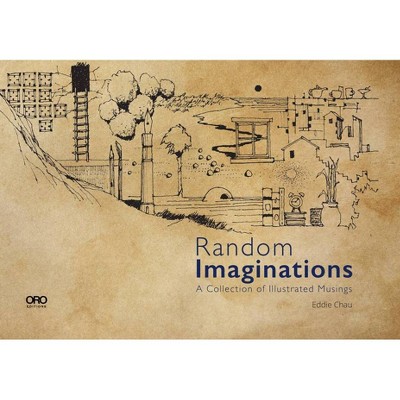Corporate Imaginations - by Mari Dumett (Hardcover)

Similar Products
Products of same category from the store
AllProduct info
<p/><br></br><p><b> About the Book </b></p></br></br>"The first extended study of the renowned artists' collective Fluxus, Corporate Imaginations examines the group's emergence on three continents from 1962 to 1978, and its complexities, contradictions, and historical specificity. Its founder, George Maciunas, organized Fluxus like a multinational corporation, simulating corporate organization and commodity flows, a reflection of how he imagined critical art practice at that time. Despite the collective's critical stance toward the corporation, Fluxus shared aspects of the rising corporate culture of the day. In this book, Mari Dumett addresses the "business" of Fluxus and explores the larger discursive issues of organization, mediatization, routinization, automation, commoditization, and systematization that Fluxus artists both manipulated and exposed in bold relief. A study of six central figures in the group--George Brecht, Alison Knowles, Maciunas, Nam June Paik, Mieko Shiomi, and Robert Watts--reveals how they developed historically specific strategies of mimicking the capitalist system. These artists appropriated tools, occupied spaces, revealed operations, and, ultimately, "performed the system" itself by employing an aesthetics of organization, communication, events, branding, routine, and global mapping. Invoking "corporate imaginations," Fluxus artists proposed "strategies for living" as conscious creative subjects within a totalizing and increasingly global system, and demonstrated how these strategies must be repeated in an ongoing negotiation of new relations of power and control between subject and system"--Provided by publisher.<p/><br></br><p><b> Book Synopsis </b></p></br></br>The first extended study of the renowned artists' collective Fluxus, <i>Corporate Imaginations </i>examines the group as it emerged on three continents from 1962 to 1978 in its complexities, contradictions, and historical specificity. The collective's founder, George Maciunas, organized Fluxus like a multinational corporation, simulating corporate organization and commodity flows, yet it is equally significant that he <i>imagined</i> critical art practice in this way at that time. For all its avant-garde criticality, Fluxus also ambivalently shared aspects of the rising corporate culture of the day. In this book, Mari Dumett addresses the "business" of Fluxus and explores the larger discursive issues of organization, mediatization, routinization, automation, commoditization, and systematization that Fluxus artists both manipulated and exposed. A study of six central figures in the group--George Brecht, Alison Knowles, George Maciunas, Nam June Paik, Mieko Shiomi, and Robert Watts--reveals how they developed historically specific strategies of mimicking the capitalist system. These artists appropriated tools, occupied spaces, revealed operations, and, ultimately, "performed the system" itself via aesthetics of organization, communication, events, branding, routine, and global mapping. Through "corporate imaginations," Fluxus artists proposed "strategies for living" as conscious creative subjects within a totalizing and increasingly global system, demonstrating how these strategies must be repeated in an ongoing negotiation of new relations of power and control between subject and system.<p/><br></br><p><b> From the Back Cover </b></p></br></br><p>"Dumett argues for Fluxus as a kind of 'thinking' by illustrating ways that Fluxus artists appropriated principles and practices, which hustled internationalism into globalization. She shows how Fluxus simultaneously exploited, expanded, denounced, subverted, used, and abused many of the scientific and data-driven experiments that formed and controlled everyday life after World War II."--Simon Anderson, School of the Art Institute of Chicago</p><p>"The idea that Fluxus--the most chaotic, incoherent, and ambiguous of the twentieth-century avant-gardes--was also driven by the principles and procedures derived from corporate culture seems as counterintuitive as everything else about this crazy quasi-movement. Mari Dumett makes a strong and original case for such a reading through a searching profile of the thought and activities of its central figure, George Maciunas, and through fascinating close studies of the work of its principal practitioners--George Brecht, Robert Watts, Nam June Paik, and Alison Knowles--and comments on lesser known ones such as Mieko Shiomi."--Terry Smith, University of Pittsburgh</p><p/><br></br><p><b> About the Author </b></p></br></br><b>Mari Dumett </b>is an art historian and arts and culture writer living in New York City. She teaches at the Fashion Institute of Technology, SUNY, and the Institute for Curatorial Practice in Performance at Wesleyan University.
Price History
Price Archive shows prices from various stores, lets you see history and find the cheapest. There is no actual sale on the website. For all support, inquiry and suggestion messagescommunication@pricearchive.us




















